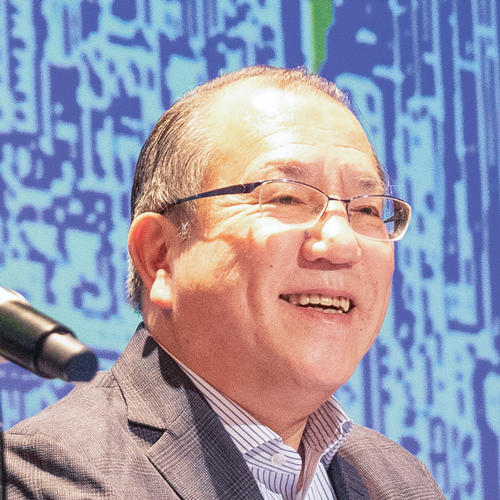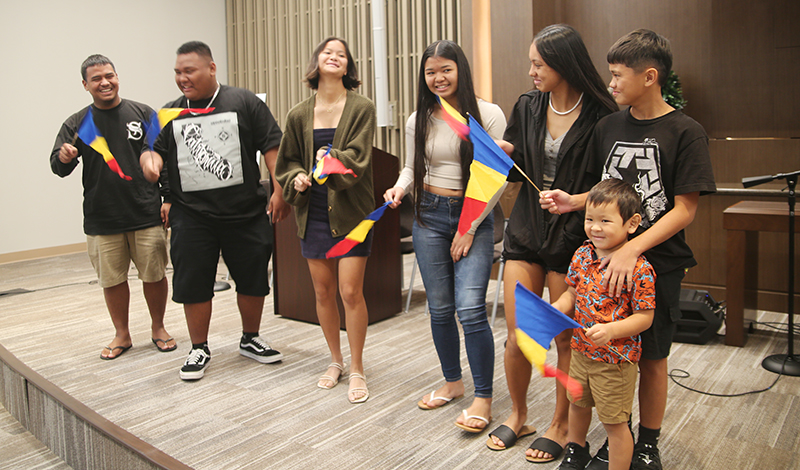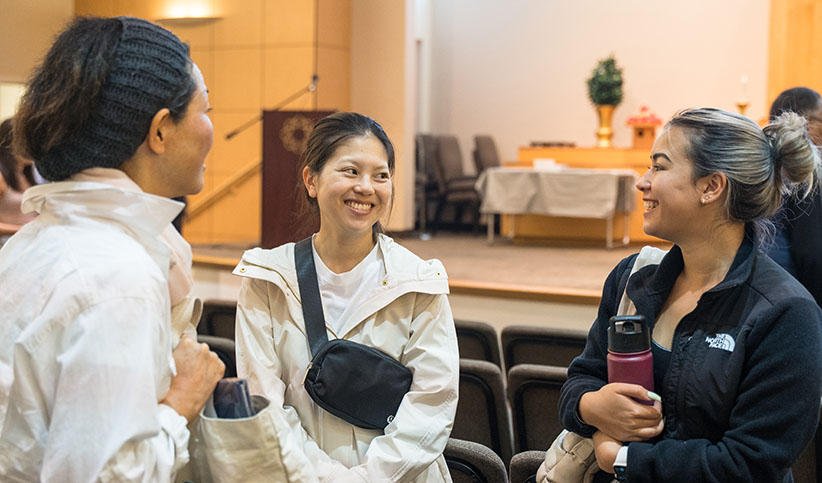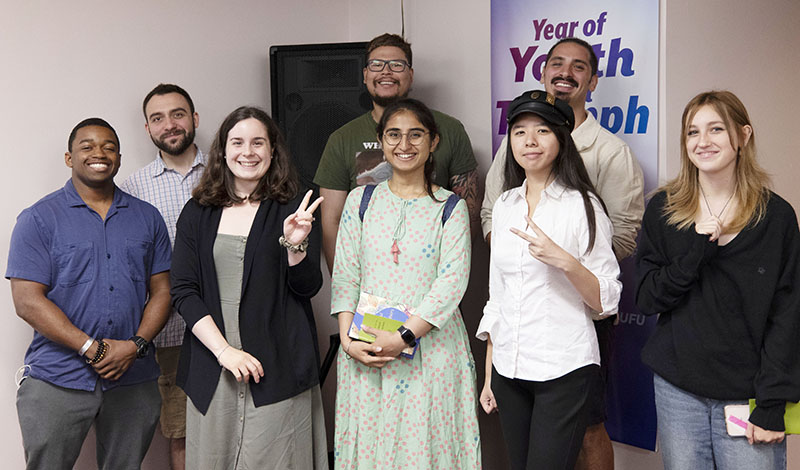The following address was made remotely from Japan at the Central Executive Committee and Executive Council Conference held on Sept. 16, 2023, at the SGI-USA Headquarters in Santa Monica, California.

by Yoshiki Tanigawa.
SGI Vice President
At today’s SGI-USA Central Executive Conference, the activity focus for 2024 was reviewed, discussed and approved by the Executive Council. I think it is extremely important and most fitting that the first point of focus is on welcoming one new youth member to each district and on strengthening the youth division.
In February 1990, at the First SGI-USA Executive Conference, Ikeda Sensei gave the following guidance:
Something that characterizes true leaders is that they are thoroughly dedicated to raising young people. When you put all your energy into developing the rich potential of youth, both you and the organization are rejuvenated. I hope that you will find and raise people with great potential, allowing them to steadily grow and fully engage themselves. If you create such a flow, the future will open up boundlessly before you. (My Dear Friends in America, third edition, p. 58)
In addition, in The New Human Revolution, vol. 14, Sensei writes:
Fostering the next generation means cultivating human character and nurturing the youth. The key to doing this is to nourish the hearts of young people, to teach them the best way to live as human beings. … We are laying the foundation for Japan four or five decades hence. In every age, Soka Gakkai leaders must pour their energies into raising successors. I say this to you in the hope that you will carry on this legacy. (pp. 151–52)
Here, he expresses his deep feelings about the importance of raising successors, calling this our legacy.
This year, too, we have been undeterred by the coronavirus pandemic. We are on track to meet our goals for growing our youth membership. Building on this foundation, let’s continue focusing on developing our youth.
What is most important for us in raising youth?
As leaders, we need to dive in and make all-out efforts to engage with the youth openheartedly and offer them warm encouragement.
In The New Human Revolution, vol. 25, Sensei teaches this most critical point in raising youth, writing:
I always take the initiative to speak with young people, to engage in frank dialogue with them and to encourage them. Leaders must not be conceited and withdrawn, ignoring youth. They should jump right in with an open heart.
For example, if a young person rushes from work but arrives only when the discussion meeting is reaching the end, we should encourage them with all our heart, saying: “Thanks for coming. I know how hard it must be to get away from work. Please keep doing your best!” Then the person will feel assured to try and attend the next meeting.
But if we look at them with an expression that says “How dare you arrive so late?” and don’t even speak to them, they won’t want to come to another meeting.
Praise is a key aspect of encouraging someone. (p. 11)
He continues:
Again, while supporting and embracing youth, I also entrust them with real responsibilities. Experience is the best teacher, after all. And even when young members fail, I take full responsibility. It’s important that we have a magnanimous spirit. (p. 11)
Toward the Soka Gakkai’s centennial in 2030, when we think about the SGI-USA’s growth and advancement of kosen-rufu, what will determine our success or failure? It is no exaggeration to say that it is how much we can nurture the youth over this next year. I hope that all the leaders will unite their hearts and minds to nurture the youth and create a solid foundation for the coming era.

Raising Capable People Through Buddhist Study
Without a doubt, strengthening our understanding of Buddhism, or Buddhist study, contributes greatly to raising capable people. As second Soka Gakkai President Josei Toda often said, “Faith seeks understanding [or reason], and understanding deepens faith.”
I’d like to confirm with you these next excerpts of guidance from Sensei about studying Buddhism.
First, regarding studying Nichiren Daishonin’s writings, he says:
It’s important to read Nichiren’s writings each day—even if just a sentence or a paragraph—making it part of your daily life and activities for kosen-rufu. Do your best to study and understand the Daishonin’s message. If you apply yourself earnestly, you’ll be able to absorb the meaning of his words into your life, as if by osmosis.
He continues:
My mentor, Mr. Toda, said, “You should read each line of Nichiren’s writings with a deep personal conviction in its truth.” There is a difference between understanding something intellectually and understanding it on the level of faith.
If you apply the Daishonin’s words to your own life, the time is certain to come when you can say, “Ah, that’s what he’s talking about!” and you will fully grasp his meaning. (Stand Up for Hope and Respect, p. 10)
Next, he talks about applying what we study:
Upon the mere mention of study, some of you may feel intimidated. But Buddhist study does not consist simply of learning facts. It means having a life philosophy as Buddhist practitioners.
In practical terms, I would like to suggest that we rigorously read Nichiren’s writings and apply them to our lives. It need not be difficult writings, at least to begin with. For example, it could be the well-known passage “Those who believe in the Lotus Sutra are as if in winter, but winter always turns to spring” (“Winter Always Turns to Spring,” The Writings of Nichiren Daishonin, vol. 1, p. 536) or, perhaps, “I am … praying as earnestly as though to produce fire from damp wood, or to obtain water from parched ground” (“Rebuking Slander of the Law,” WND-1, 444).
When we have total faith in these passages and continue to strive in exact accordance with them, we will be able to see the validity of these words for ourselves and develop great conviction in the Gohonzon.
This is what it means to truly study the Daishonin’s writings. In other words, it is practical Buddhist study that we can apply to our daily lives. If we can engrave one passage in our heart, making it our own, we will naturally be able to grasp other passages. This is because the mastery of one phrase leads to the comprehension of all others. (The New Human Revolution, vol. 11, revised edition, pp. 107–08)
An organization is a group of individuals. When each person’s conviction in faith becomes stronger and deeper, the organization will become stronger and amass even greater energy to advance kosen-rufu. Let’s encourage members to read the Gosho with their lives, as Sensei instructs.

One-to-one Dialogue Helps Bring Out Our Potential
As for strengthening our organization, the only way to do this is to persistently and steadily home visit members and offer personal guidance.
Sensei says:
The most noble practice of Buddhism is found in visiting, meeting and talking with one member and then another in their homes for the sake of kosen-rufu. Even if you visit one member each day, in one year, you’ll have encouraged 365 people. Your benefits grow to the extent that you take such actions. Leaders must take initiative in setting goals and challenging to accomplish them. (Tentative translation, March 19, 2014, Soka Shimpo, p. 1)
The role of a leader is not to convey vague and intangible guidelines. True leaders are those who convey the direction that is discussed and agreed upon by taking the lead in practically carrying out that direction. Seeing leaders taking such action, others are roused to also stand up and take action, thereby accelerating the momentum.
Sensei says:
Nothing is more powerful than dialogue between two people. The time is long past when leaders in the Soka Gakkai could get away with speaking down to members from on high. It is a delusion to think that you are advancing kosen-rufu by simply lecturing to crowds of people and being applauded. That is sheer fantasy.
Of course, meetings serve a meaningful purpose, and there are times when we need to hold large meetings. But such gatherings only allow for one-way communication. It’s hard to really touch people’s lives that way.
He continues:
One-to-one dialogue leads to real understanding, and that life-to-life interaction helps each person bring out their enormous potential.
As top leaders, you don’t need to always call people together for meetings. Leaders should go out and visit the members. Visit them at their homes and offer encouragement. Such steadfast efforts will have a ripple effect throughout our organization.” (Oct. 12, 2007, World Tribune, special insert, p. 4)
In planning our activities for the coming year, let’s each return to our prime points in faith and in our struggles as disciples and start anew, with fresh determinations. And, together, let’s generate great waves of developing and expanding our youth.
You are reading {{ meterCount }} of {{ meterMax }} free premium articles

